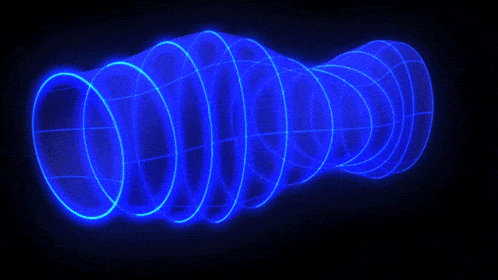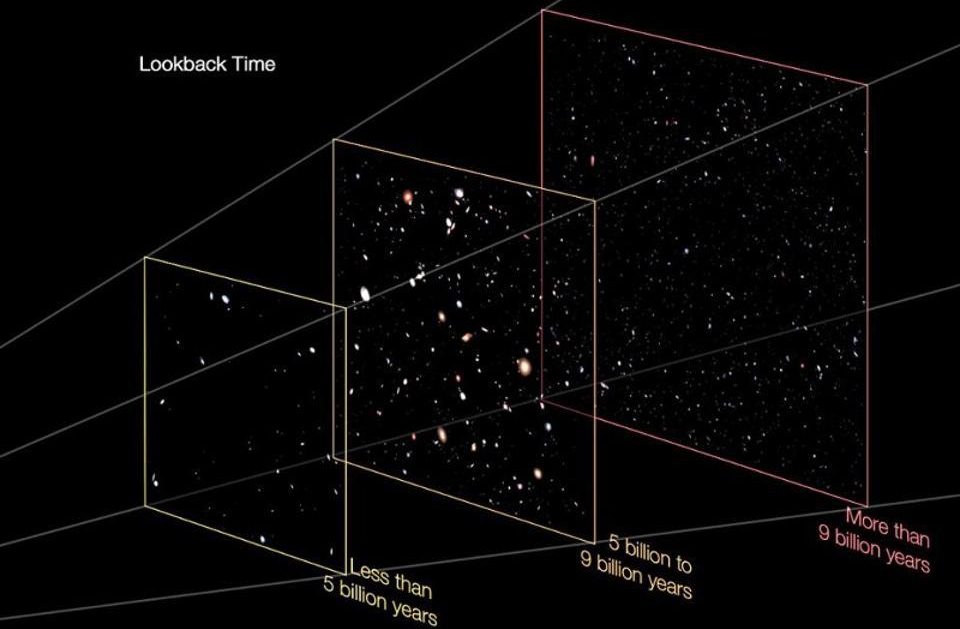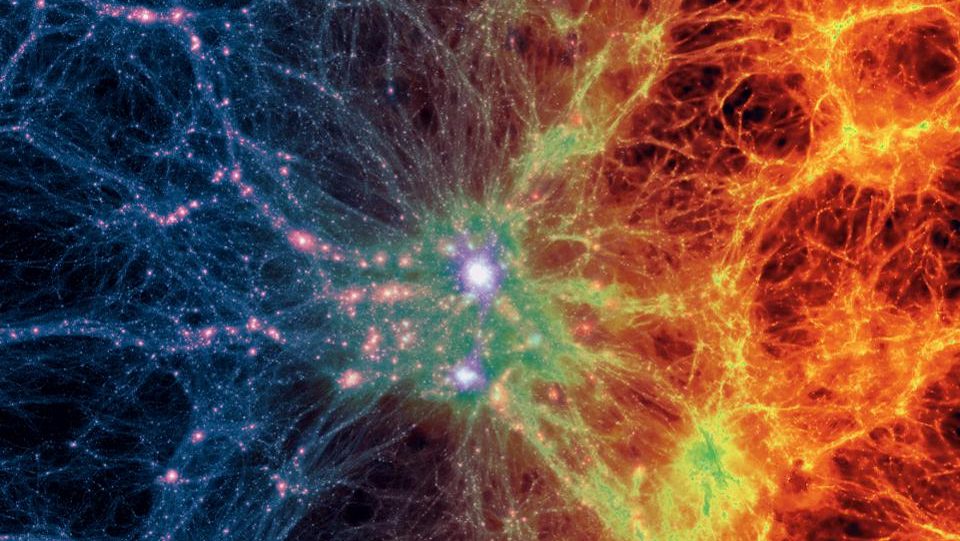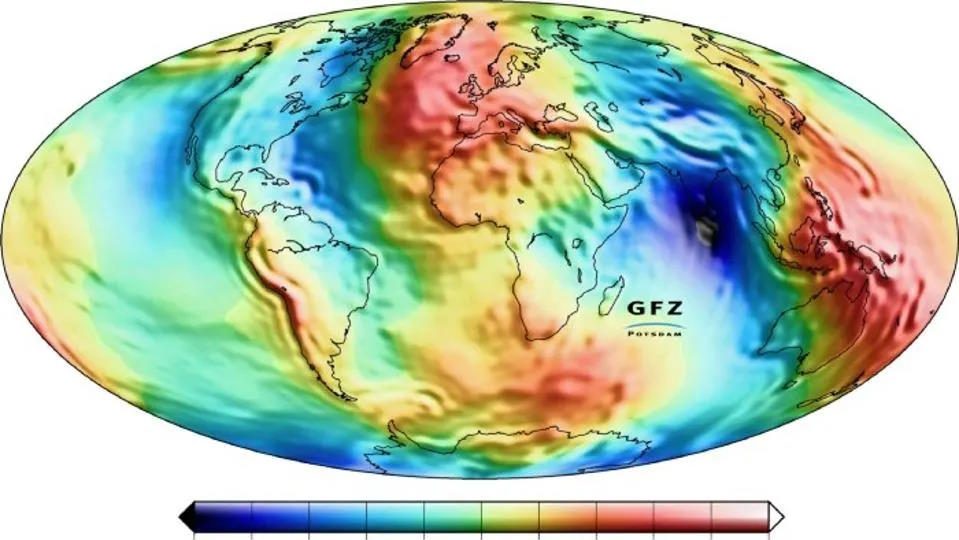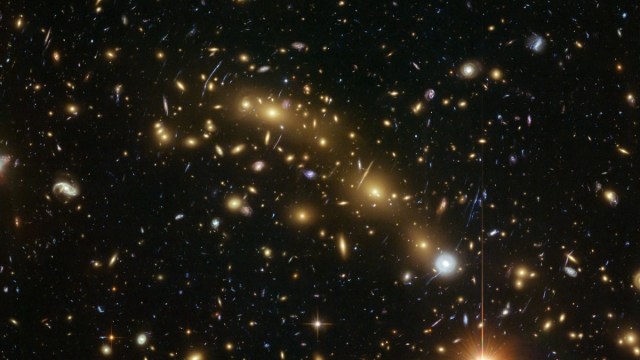Move Over, Hubble: Gravity Itself Is The Best Cosmic Telescope Of All
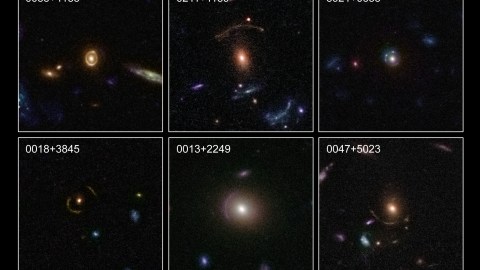
Sometimes, space itself comes with its own magnifying lens.
“We see the world through the lens of all our experiences; that is a fundamental part of the human condition.” –Madeleine M. Kunin
If you want to see farther into the distant Universe, you need to gather more light. Just as a light bulb or candle appears fainter the farther away it is from you, the stars and galaxies located at progressively greater and greater distances are much more difficult to detect and observe. In astronomy, your ability to find and study an object is completely dependent on how many photons you can collect from it.
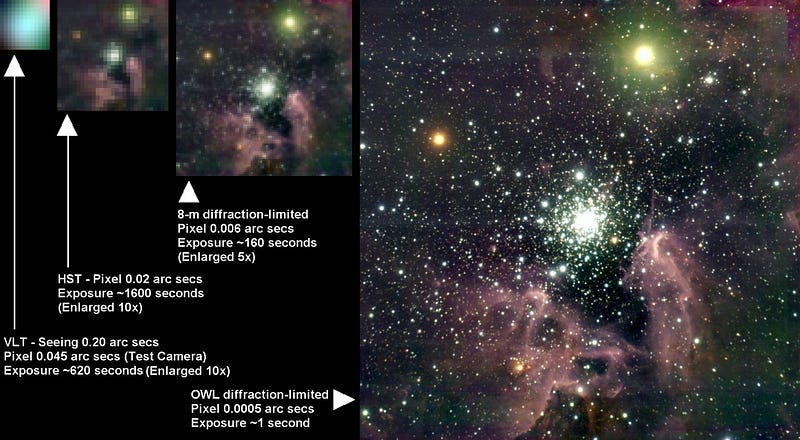
Traditionally, there were only two ways to collect more photons:
- Build yourself a bigger telescope, and thereby increase your light-gathering power, or
- Observe your target object for longer periods of time, thereby increasing the amount of light you gather overall.
Sure, you can increase the efficiency of the light you gather as well, by either going to space (so you don’t have to fight with the atmosphere) or by installing tremendously sophisticated adaptive optics systems (so you reduce your noise and make each photon more efficient and meaningful), but at the end of the day, you’re still limited by how much light you can gather.
But what if instead of building larger — and more expensive — telescopes, or spending all of your observing time focusing on the same one target, there were a way to magnify the ultra-distant targets, and brighten the light coming from them? In a tremendous stroke of serendipity, Einstein’s theory of General Relativity predicts exactly that phenomenon: gravitational lensing.
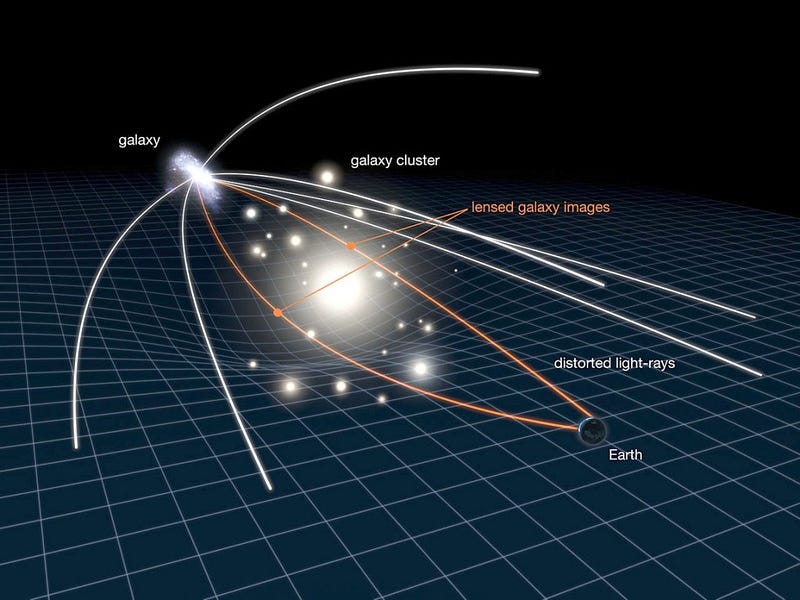
If you learn nothing else about General Relativity, learn this: its central idea is that space and time are not independent, but rather make up a single, continuous and inseparable fabric known as spacetime, that every particle travels through this spacetime, and that the presence of matter and energy warps the fabric of spacetime itself. It was realized by Fritz Zwicky in the 1930s that if you got a large enough amount of mass together in one location in space — something like an ultramassive galaxy or a cluster of galaxies — it could acts as a strange sort of magnifying glass on the objects behind it: as a gravitational lens.
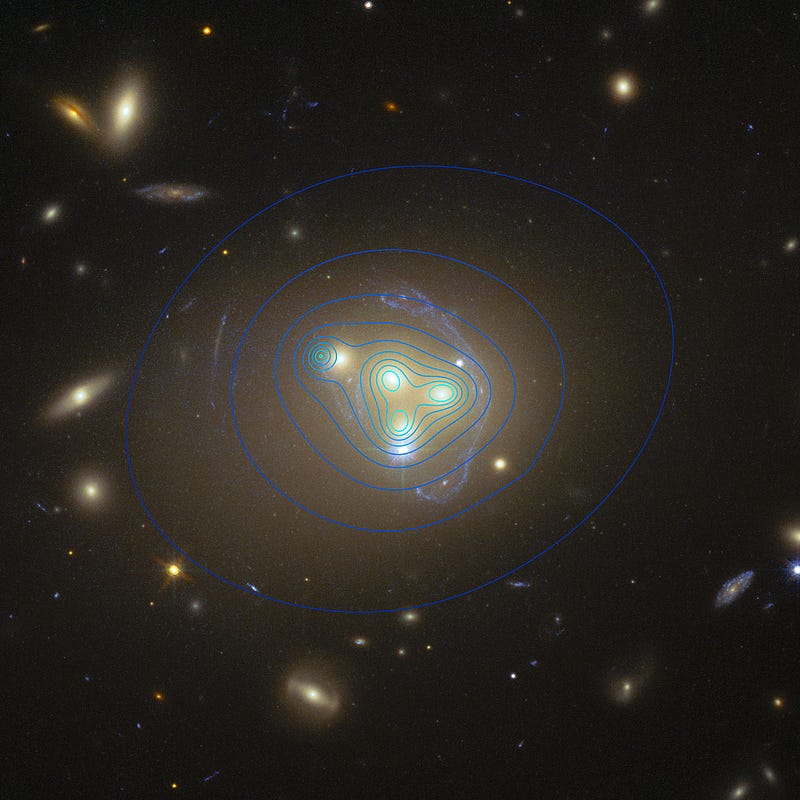
Gravitational lenses can behave in multiple ways, depending on how the background and foreground sources are oriented:
- They can create multiple images of the same galaxy, as the light-path is bent in different directions.
- They can cause image distortions, including radial arcs, elliptical shapes, and “stretched-out” images.
- And if the alignment is perfect, it can create a distortion so severe that the background object can be stretched into a complete or near-complete circle known as an Einstein ring.
But all of these cases have something in common: the gravitationally lensed object gets magnified, increasing its brightness as we observe it many times over.
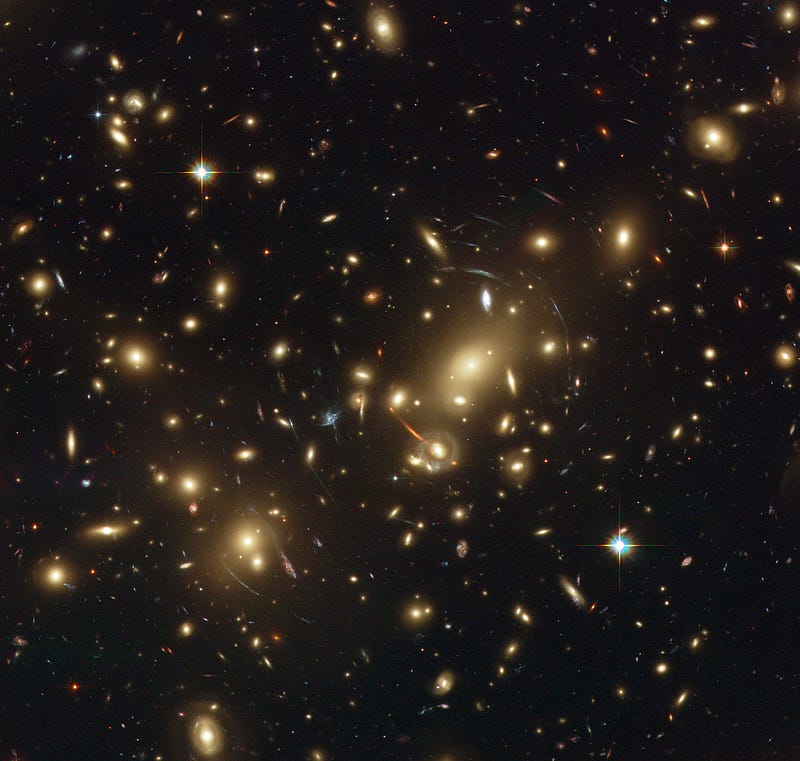
Acknowledgement: Davide de Martin & James Long (ESA/Hubble).
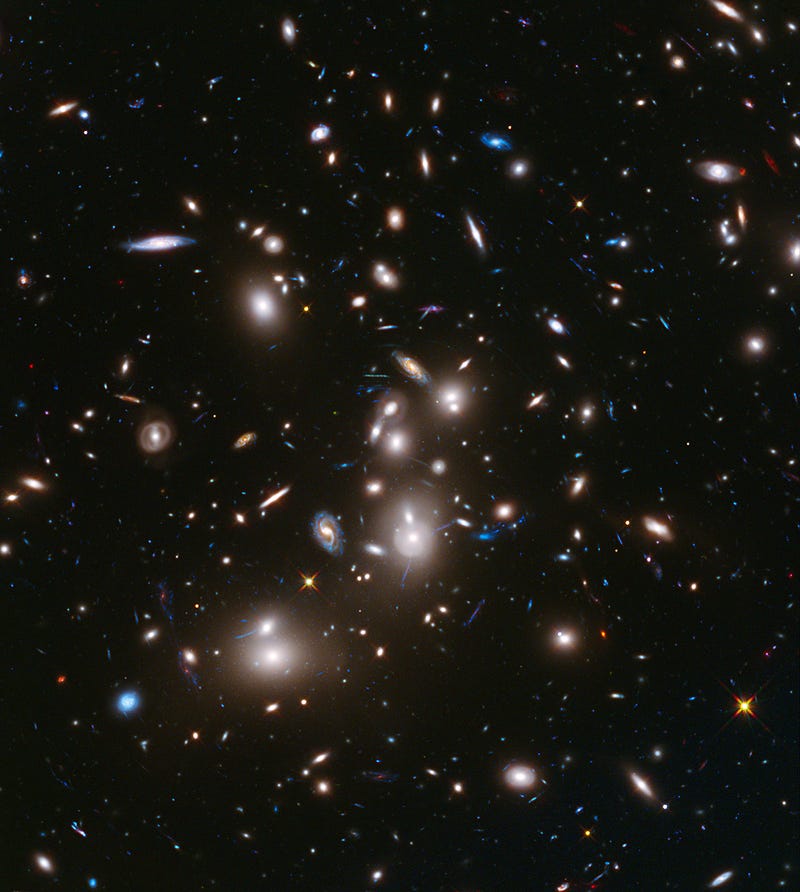
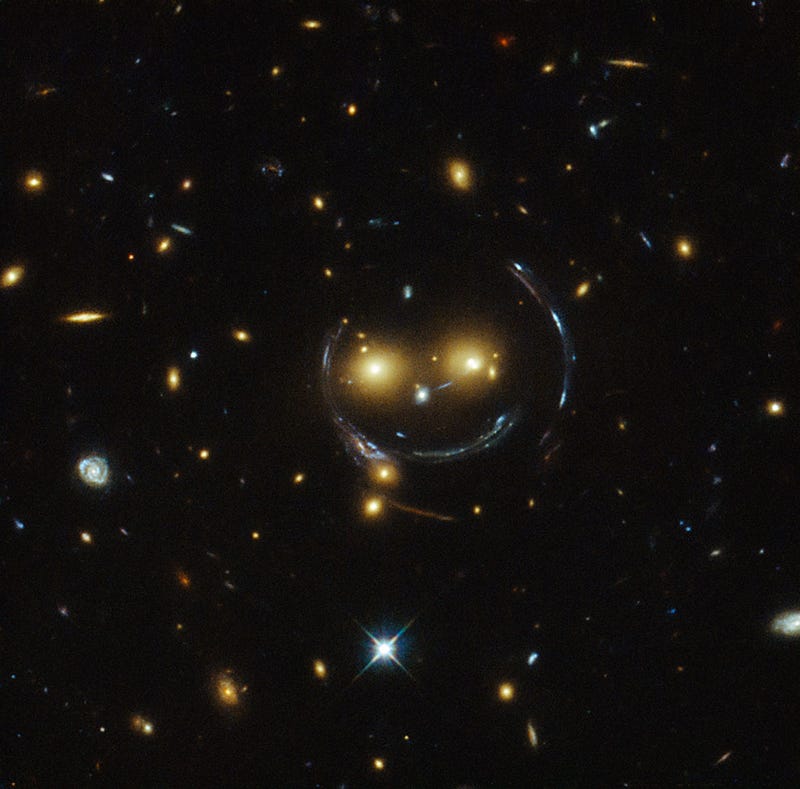
It’s this technique that’s empowered us to find the most distant quasars and galaxies ever discovered, including the current record-holders. By using all of our advances together: the largest telescopes capable of gathering the most light, long observing times, and the fortuitous alignment of distant objects with gravitational lenses, we can probe farther into the distant Universe than with any other technique. It’s also how we found the presently most distant galaxy of all: current record-holder EGSY8p7, which would have been undetectable without the magnification.
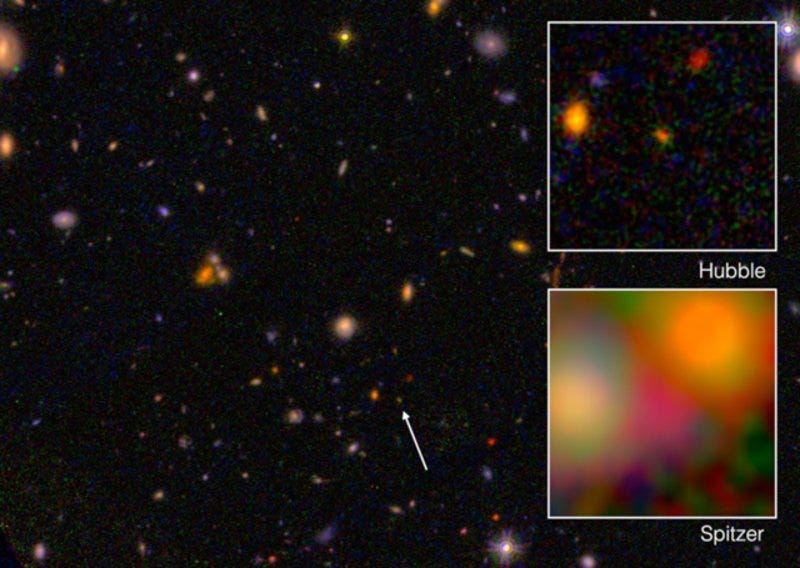
Although the first gravitational lens wasn’t discovered for some 40 years after it was first theorized, it’s now the most prolific tool for weighing distant (foreground) galaxies, and discovering ultra-distant (background) galaxies. Although this isn’t a technique we have precision control over — the Universe puts the lenses and the lensed objects where they are, and all we can do is watch — there’s a spectacular amount of material that’s out there, and the longer we spend looking in the right wavelengths and with the right tools, the more ultra-distant objects we find in the Universe.
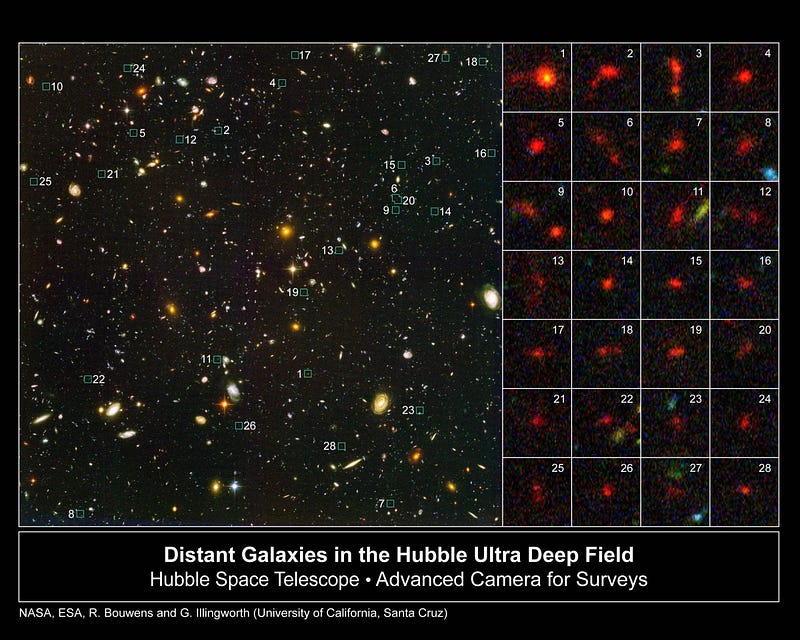
Better telescopes, better technology and more time all helps, but when it comes to the ultimate cosmic magnifying glass, our tools have nothing on the power of Einstein’s theory of General Relativity. The masses in the Universe and the properties of spacetime itself shed more light on the distant Universe than we could ever hope to on our own!
Leave your comments on our forum, support Starts With A Bang! on Patreon, and pre-order our first book, Beyond The Galaxy, today!
